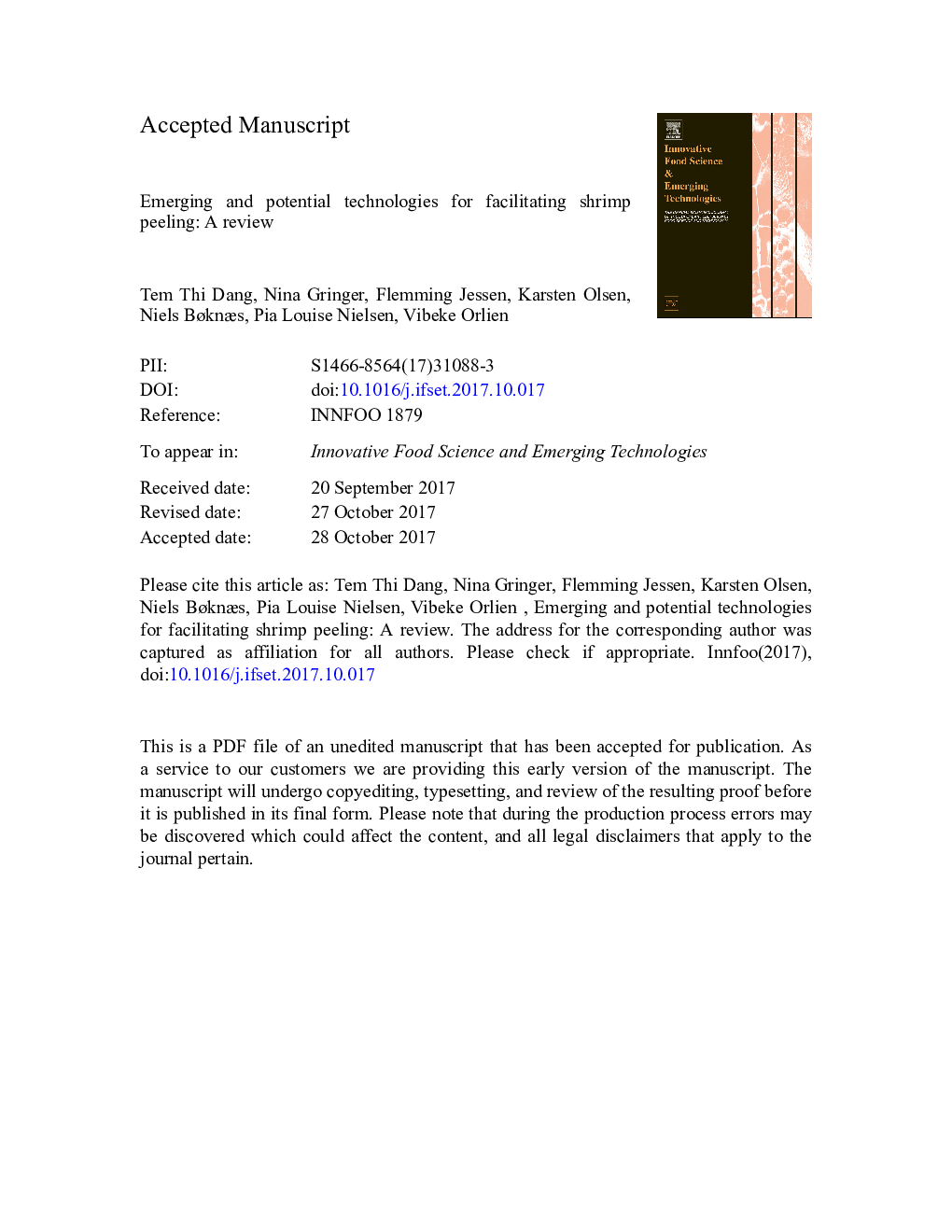| Article ID | Journal | Published Year | Pages | File Type |
|---|---|---|---|---|
| 8415700 | Innovative Food Science & Emerging Technologies | 2018 | 41 Pages |
Abstract
During the production of peeled products, the shrimp processing industry has suffered from drawbacks of the traditional ice/brine maturations - a step facilitating the peeling. The drawbacks include yield loss, reduction of organoleptic quality, risk of microorganisms, time consuming issue and discontinuous process due to a long time soaking in maturing tanks. Therefore the need for seeking alternative methods to replace the traditional long maturations has grown, that address the future trends in sustainable processing of ready-to-eat shrimps. Emerging technologies e.g. high pressure, enzyme, ultrasound and microwave can potentially become the alternatives since they have strong peeling effects on lobsters, crabs, bivalve mollusks, eggshells, human skin, fruits and vegetables. Also these technologies offer benefits such as short process time, retained nutritional and sensorial characteristics, energy and water efficiency which all promise higher profits for the shrimp industry.
Related Topics
Life Sciences
Agricultural and Biological Sciences
Food Science
Authors
Tem Thi Dang, Nina Gringer, Flemming Jessen, Karsten Olsen, Niels Bøknæs, Pia Louise Nielsen, Vibeke Orlien,
